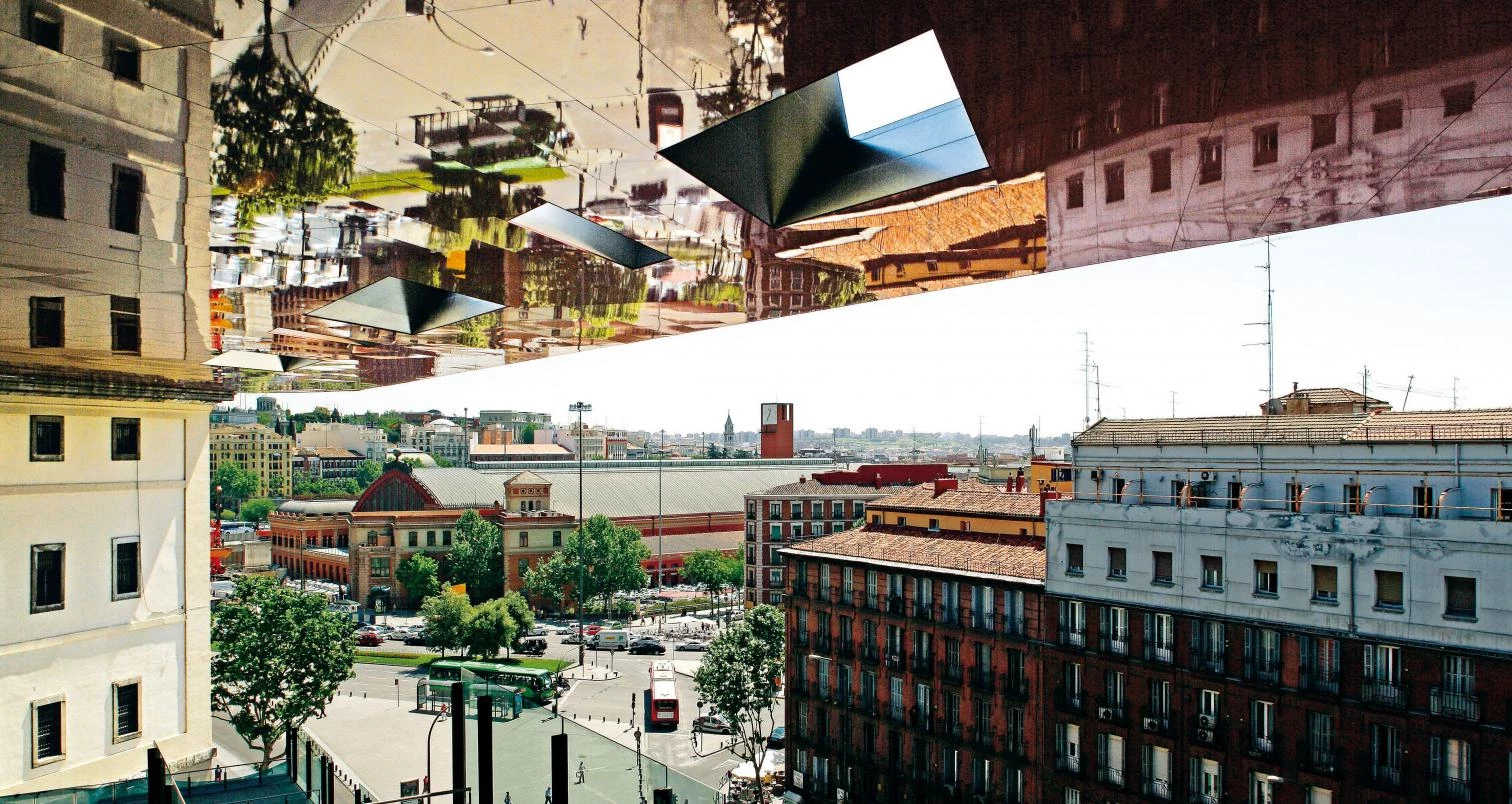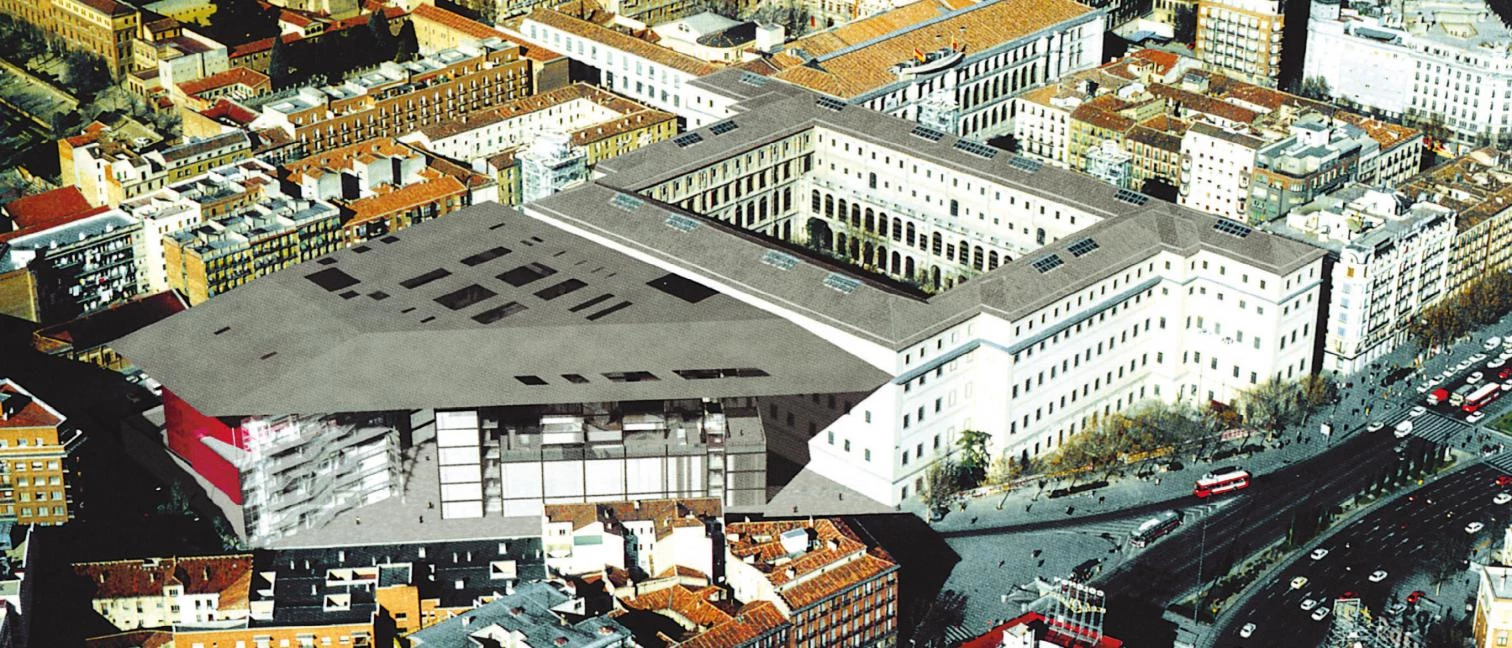Factoría Nouvel
La inauguración parcial de la ampliación del museo Reina Sofía en Madrid, un proyecto de Jean Nouvel, ha desvelado una obra tan eficaz como decepcionante

The new Reina Sofía is a grand building, but not a great work. A B-product of Nouvel’s factory, its lightweight aesthetic combines all the futuristic features that have made the French architect so popular: the industrial atmosphere of steel-and-glass constructions, a theatrical taste for bright and dark interiors, the dissolution of volume by sharp edges and reflecting surfaces. In hygienic contrast to the inert gravity of the old hospital, the extension of the museum groups together the new temporary exhibition galleries, the auditorium, and the library beneath a floating, cherry-colored canopy that has a sculptural perforation to illuminate the spectacular central atrium, and the complex is lightened by means of transversal voids, translucent latticeworks, and steel mirrors that give it an immaterial air. Built with cold passion and an analytical spirit on a tight trapezoidal lot adjoining the work of Sabatini, future visitors standing at the terrace lookouts will also note its role as an urban hinge between the monumental profile of Atocha Station and the cluttered, folksy Lavapiés quarter, two landmarks of the sentimental geography of Madrid that the events of 11 March 2004 rendered inseparable.

Adjacent to the old hospital by Sabatini, the Nouvel extension is embedded in a dense urban context, where its light, industrial and scenographic approach brings the hustle of the city into the museum.
A minor work of a major architect, the enlargement that is now being inaugurated in part – in a staggered opening that distorts both the organization of the job and the public’s perception of the building – has the quality expected of leading brands, whether of automobiles or of architectures. And in the same way that the buyer of luxury vehicles does not censure the continuity of the features on which his fidelity to the manufacturer is based, here the client should make no reproach if the light-looking canopy comes from Marne-la-Vallée and Lucerne, the careening bodywork from Tours, the latticework from Bezons, the industrial stairs from Nîmes, the slender columns from Nantes, or the glazed scaffoldings from the Cartier building in Paris. The critic can only lament venial sins: the difficult agreement between stone claddings and enameled metal curves, the hapless cut of the canopy where it meets Sabatini’s cornice, the renouncing of toplighting in the upper exhibition gallery, or the absence of trees in the atrium due to the multiplication of storage basements.

Otherwise this red and black Nouvel – which won the 1999 competition against the likes of Dominique Perrault or Juan Navarro Baldeweg – places itself with dignity in the creative register of an architect who has managed to reconcile the seductive imagination of film, advertising, or fashion with the French tradition of experimental engineering that stretches from Pierre Chareau to his master Jean Prouvé, and build these mediatic and mechanic theaters that are his distinctive trademark. In Madrid he has had the extraordinary collaboration of Alberto Medem, a young architect who graduates from the major division of the league of projects with this work, carried out by ACS-Dragados with only a 16% increase over the initial budget of 68 million euros. Something like a miracle when one verifies the demanding geometry of the technical ceilings, the painstaking rigor of the facades, or the detailed discipline of the finishes in this colossal construction, which from now on will be subjected to the degree of public scrutiny that befits its function: to accommodate the ceremonies of art, now the State’s only religion and thus the object of so much controversy where the election of its priests and the architecture of its churches are concerned. But no one will cry out that the Queen is naked.





